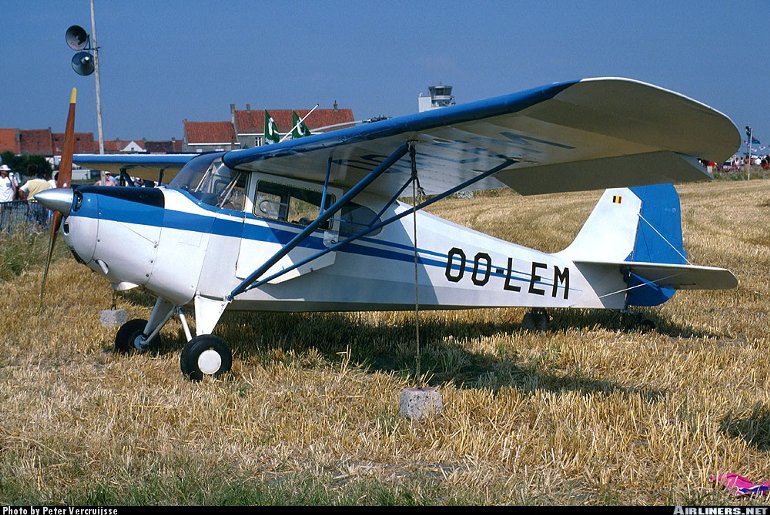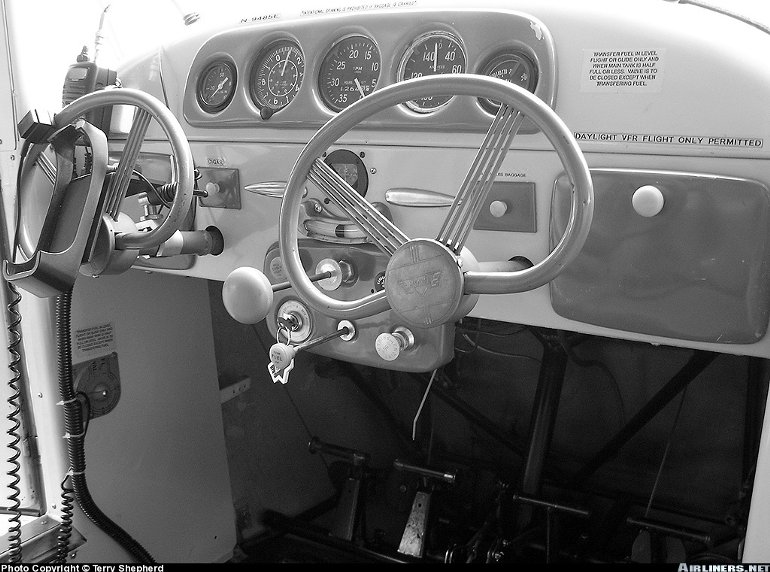Aircraft Technical Data
Aeronca 11 Chief


| Details | |
| Country of Origin | United States of America |
| Type | Two seat light aircraft |
| History | The Aeronca 11 Chief, designed by Ray Hermes, was developed at the same time as the tandem seat Model 7 Champion, but it featured a wider cabin for side by side seating. The first flight was made in 1945, but the type was only shown publicly for the first time at the National Air Show in Cleveland in November 1946. The Chief has a welded steel tube fuselage with fabric covering. A door on each side gives entry to the side by side cabin, and a baggage compartment is located behind the seats. Streamlined wheelpants were available as an option. Except for the fuselage, 80% of the parts are interchangeable with the Model 7 Champion. The first version of the Chief was the 11AC, powered by a 48kW (65hp) Continental A-65-8F engine, and the Type Certificate was issued September 28 1945. A floatplane version on Edo Floats was certificated on July 22 1947 as the S11AC. The Chief was available in a "Standard" version, or as a fully-equipped "Deluxe" version. In 1947 a "Scout" version was added, which was a bare pilot trainer. The 11BC had a more powerful 63kW (85hp) Continental C-85-8F engine and a large dorsal fin, and was also available as the float-equipped S11BC. These models were certificated respectively in August 1947 and September 1948. The third version was the 11CC Super Chief with the same Continental C-85 engine, but with a little more room, improved styling, luxury equipment now included as standard, and some other improvements. The 11CC was certificated in May 1948, and its float-equipped equivalent, the S11CC, in October 1948. In 1951 Aeronca stopped production of light aircraft, as the market for light aircraft was not profitable anymore and as they had large orders for Korean War equipment to fulfill. E.J.Trytek acquired the rights for the Model 11, but did not build the Chief themselves. The 11CC was however licence-built in India as the Hindustan HUL-26 Pushpak with a 67kW (90hp) Continental C-90 engine. The first flight was made on September 28 1958, and the type was produced until 1968. A total of 154 were received by Indian flying clubs. Eventually, Bellanca bought the Model 11 type certificate, and they used the model for developing a new trainer. They rebuilt a standard 11AC to the new model, but after a lengthy test period did not proceed further with the design. |
| Powerplants | One 48kW (65hp) Continental A-65-8F (11AC), or 63kW (85hp) Continental C-85-8F (11BC/CC), or 67kW (90hp) Continental C-90 (HUL-26). |
| Performance | Max speed 169km/h (91kt) for the 11AC, 177km/h (96kt) for the 11BC/CC, cruising speed 153km/h (83kt) for the 11AC, 161km/h (87kt) for the 11BC. Service ceiling 10,800ft for the 11AC, 14,500ft for the 11CC. Max initial rate of climb 152m (500ft)/min for the 11AC, 198m (650ft)/min for the 11CC. Range 531km (287nm) for the 11AC, 595km (322nm) for the 11CC. |
| Weights | Empty 329-340kg (725-750lb) for the 11AC, 372kg (820lb) for the 11CC. Max loaded 567-612kg (1250-1350lb) for the 11AC, 612kg (1350lb) for the 11CC. |
| Dimensions | Wing span 11.00m (36ft 1in), length 6.35m (20ft 10in), height 2.08m (6ft 10in). Wing area 16.3m2 (175.5sq ft). |
| Capacity | Accommodation for pilot and passenger side by side. |
| Production | 2325 Chiefs built between 1946 and 1951 (including 1867 11AC, 181 11BC, and 277 11CC) plus 154 Pushpaks built between 1958 and 1968. |
| Related Links | Aeronca 11 Chief |
The backbone of this section is from the The International Directory of Civil Aircraft by Gerard Frawley and used with permission. To get your own copy of the book click here. |
|








